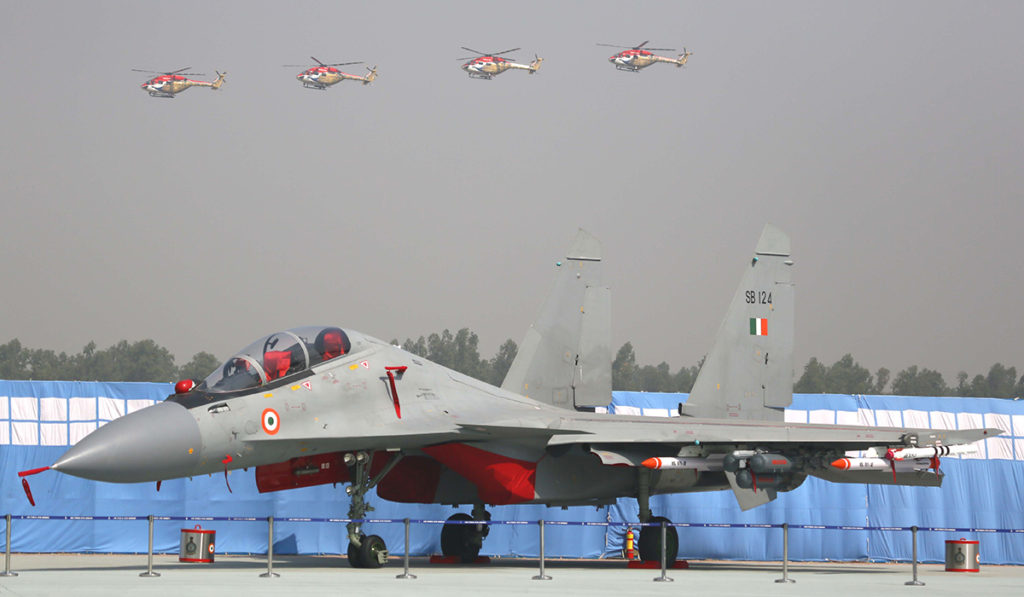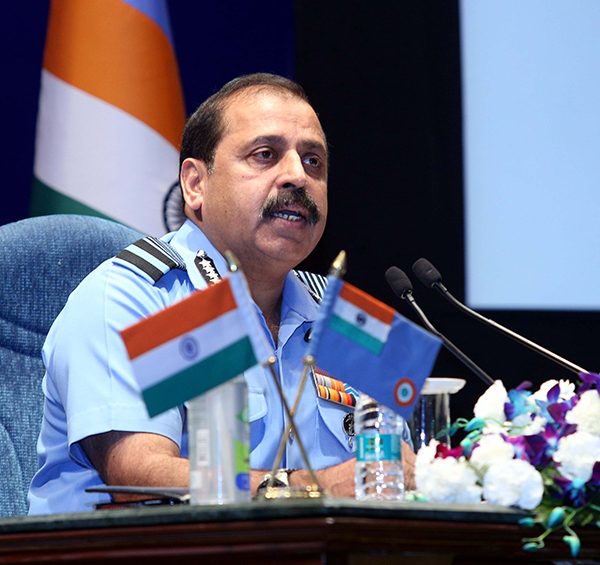On the occasion of the 88th Air Force Day, Chief of Air Staff, Air Chief Marshal RKS Bhadauria, spoke to the Chied Editor Maj Gen Ravi Arora.
IMR. In view of the existential Chinese threat how do you intend to make up deficiencies in aircraft, armament and essential resources in the short and long term?
CAS. The Chinese threat is not existential. While we continue to evaluate our current and future threat scenario as part of our planning process, we are taking suitable measures in terms of threat perceptions with respect to China for acquisition of platforms, weapons and capabilities in order to meet our capability requirement. We have planned for induction of indigenous fighters such as the remaining LCA (Light Combat Aircraft) Mk1 and the LCA Mk1A. Further, we fully support the LCA Mk2 and AMCA (Advanced Multi-role Combat Aircraft) programmes. The remaining Rafales will also join the IAF by 2022. Additional Su-30 and MiG-29 fighters are also in the pipeline. Additional force multipliers such as AEW (Airborne Early Warning) Systems and FRA (Flight Refuelling Aircraft) aircraft are also under consideration.
Aerospace Commission
IMR. What is happening about setting up an aerospace commission, which was recommended years ago. Is it not doable? Does the IAF support the concept to bring in synergy in use of all aerospace resources like ISRO in the case of space.
CAS. Outer space has been recognized as a strategic domain with likelihood of future battles being fought in an integrated manner with increased utilization of space assets. To this end, the Defence Space Agency (DSA) has been formed to bring about the required synergy for operational control of all space resources in achieving our national military objectives. We fully support this concept. The DSA itself is an interim arrangement and we shall see its evolution to an Aerospace Command in times to come. As regards an Aerospace Commission, we have given our recommendations in the matter and support this evolution.

Light Combat Helicopter
IMR. The Light Combat Helicopter (LCH) remains under development. When can we expect the IAF to be equipped with it? What is causing delays?
CAS. The RFP (Request for Proposals) for the helicopter for both IAF and IA (Indian Army) was issued in December 2017. The IOC (Initial Operational Clearance) for the LCH LSP (Limited Series Production) has been accorded and the cost has already been finalised by the cost committee. The contract is likely to be signed in this calendar year and we expect the induction to commence a year or so thereafter.
IMR. Would the IAF not like to be involved in the development of the LCA Mk 2 like the India Navy gets involved in its projects through design bureaus and leading the manufacturing effort. Can we improve HAL (Hindustan Aeronautics Ltd) performance in the regards with more involvement of private companies or a consortium.
Design & Development
CAS. The IAF has been fully involved in the development of LCA through our team in flight test centre and project management at ADA (Aeronautical Development Agency). The Tejas variants and AMCA are indigenous fighters, which will form the core of our fighter fleet in the decades ahead. We are also deeply committed to the HTT-40 and the LCH programmes. The IAF is heavily invested in these projects. We have teams of test pilots, flight test engineers, programme managers and logisticians deeply embedded at all levels in the design and manufacturing complexes at DRDO (Defence Research & Development Organisation), HAL, ADA and other stakeholders.
In keeping with the requirements of an Atmanirbhar Bharat in the defence sector, we see a major opportunity for the private sector. We feel our requirements could be met faster and more efficiently with a mix of public and private sector partnership, both in design and development and manufacturing.
Aeroengines
IMR. We made a fatal mistake when we declined an offer by Rolls Royce for the co-development of an aeroengine for HF-24. We repeated the same when Safran offered co-development of Kaveri engine as part of offsets of Rafale project. How do we move forward to get aeroengines technology?
CAS. For the AMCA programme to succeed, the design and development of an indigenous aero engine is a pre-requisite. The technology is niche and the process complex and expensive. This can happen with experience gained from the Kaveri programme and a collaboration of aero engine houses, academia, industry and defence PSUs. DRDO is considering various options with international design houses including Safran for co-development of an engine for AMCA and beyond.
Training
IMR. NDA cadets have moved from gliders to microlight. Systems are getting more complex but more automation, AI, robotics and simulators, can compress time frame of training and improve degree of difficulty for better proficiency. What changes have taken place in training philosophy of the IAF?
CAS. The training philosophy of the IAF has been adapted to keep pace with developments in the strategic space of operations. We have modified our basic training stage, which will see pilot trainees graduating with a B.Tech degree.
To promote jointness in operations, ground duty and technical branch officers will also now be inducted through NDA (National Defence Academy), expanding the inter-Services interaction across branches. Use of simulators for ground training such as for mechanical transport operators, e-training format for air warriors and more officers being sent for post-graduate courses to remain abreast of technological developments are some of the steps taken in this direction. Simulators have also become an integral part of our flying training right from the basic stage in the Pilatus PC-7 to frontline fighters such as the Su-30 MKI and the Rafale.
ALSO READ IAF MODERNISATION: Arming to be Ready


















